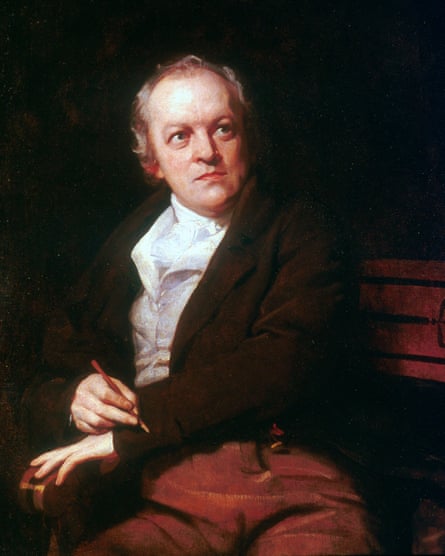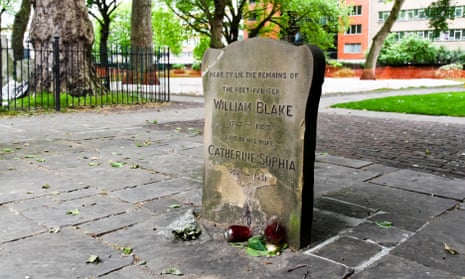When the stone marking William Blake’s grave is unveiled this afternoon, on the 191st anniversary of the poet and painter’s death, it will also mark the conclusion of 14 years of detective work and campaigning for two of his admirers.
Carol and Luis Garrido had always had a fascination for the man who wrote poems such as The Tyger and And did those feet in ancient time, better known as Jerusalem, England’s unofficial national anthem, as well as art and engravings that have inspired artistic movements.
When they decided to visit Bunhill Fields in London to find his grave in 2004, they discovered only a stone saying that the remains of Blake and his wife Catherine Sophia lay “near by”.
After two years of research, they pinpointed the exact site, and after years of fundraising, the Blake Society has been able to mark the spot with an official memorial, to be inaugurated with addresses by Philip Pullman, the Blake Society president and novelist whose His Dark Materials trilogy draws on Blake’s works, the musician Jah Wobble, comedian Will Franken, and other prominent Blakeans.
“When you see the stone that says ‘near by’, it’s so vague,” Luis Garrido said. “We wanted to know the exact spot.”
Finding it proved a bigger challenge than they imagined. Bunhill Fields was a cemetery popular with Dissenters, and when Blake died, largely unrecognised, in 1827, his was the fifth of eight coffins to be buried in the plot.
The graveyard had been arranged in a grid, and the co-ordinates were in the Bunhill Fields burial records, given as “77, east and west, 32, north and south”. But after bomb damage during the second world war, the Corporation of London decided to transform part of the site into gardens, leaving only two remaining gravestones, and moving Blake’s stone next to a memorial to an obelisk commemorating Daniel Defoe.
The burial records were not always precise, according to Carol Garrido, whose skills as a landscape architect were vital. “You could see the handwriting in the burial order book change,” she said. “We imagined someone who was a clerk in the office, writing what the foreman of the gravediggers told them.” By using the two existing graves to find a point of origin, after two years they had found the right place.

“When I was growing up in Portugal, I didn’t know about his poetry or writing but I saw the illustrated books, the pictures, the beautiful handwriting,” Luis Garrido said. “I decided to study English specifically to be able to read his poetry. There are people all over the world like this. Even if you cannot understand the words, you start reading the pictures and you are transported to a different world. He visualised an England that will become a new Jerusalem, the home of spiritual enlightenment.”
Blake trained as an engraver, illustrating books and reproductions of art in churches around London, but went on to produce his own illuminated books, such as The Marriage of Heaven and Hell, and his prophetic works based on his own invented mythology. He has been regularly rediscovered by artists, starting with members of the pre-Raphaelite movement in the 1860s, classical composers such as Benjamin Britten and John Tavener, and the counter-cultural movements of the 1960s. Two of the great graphic novelists, Alan Moore and Neil Gaiman, have also been inspired by Blake.
“There was no one really comparable to him and he wasn’t part of any establishment, you’d almost call him an outsider artist,” said Jeremy Deller, the 2004 Turner prize winner. “He stood apart from everyone else and was viewed with quite a lot of suspicion, I imagine, by the establishment. But of all the artists of that time, he’s the one who has this huge appeal to artists now because of the way he wrote and the ambition of his work.
“He was interested in the past, present and future – in ancient, pre-Christian culture and ancient history, but also very much in today, the working conditions of children, the state of Britain at that moment. He also looked forward to the future, what might it look like.”
The gravestone, carved by Lida Cardozo, will feature a verse from his epic Jerusalem: The Emanation of the Giant Albion: “I give you the end of a golden string/ Only wind it into a ball/ It will lead you in at Heavens gate/ Built in Jerusalems wall.”
